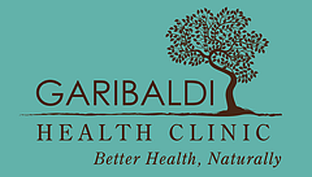Marijuana: Forbidden Medicine
Back in the 1970s, Dr. Lester Grinspoon, a professor at Harvard University Medical School, was in the process of writing a book about the dangers of marijuana, when his nine-year-old son came down with leukemia. The chemotherapy treatments made the boy so violently ill, his doctors feared that his convulsive vomiting would actually break ribs.
Before the next treatment, the boy’s mother got him to smoke a little marijuana, and when Dr. Grinspoon arrived to pick up his son, he heard laughter coming from the treatment room. Not only was the boy feeling fine, but he insisted on stopping on the way home to eat a huge submarine sandwich.
Dr. Grinspoon became an instant convert to the cause of medical marijuana and went on to write three books on the subject.
There are many such accounts about the effectiveness of marijuana in relieving symptoms for a broad range of medical conditions, from AIDS wasting syndrome, to MS pain, Crohn’s disease, glaucoma, and many others. And yet cannabis, as it’s also called, remains illegal in Canada, despite the fact that an estimated three million people use it recreationally.
Illegal, but no longer inaccessible. There are now two ways that patients can gain access to medical marijuana without running afoul of the law: compassion clubs and Health Canada permits. There are now 14 compassion clubs, scattered thinly between Halifax and Victoria, all non-profit, all operating with the cooperation of the police. Marijuana is sold in strictly limited quantities to patients who are certified by a medical or naturopathic doctor having a medical condition that responds to marijuana.
To get a Health Canada permit you are required to jump through many more hoops, which explains why only about 2000 have been issued since the program began in 1999, while one Vancouver compassion club alone has twice that many patients. Health Canada also issues permits for clients to grow their own marijuana, or for growers to supply patients, albeit under very strict limits.
There are several problems with the Health Canada program. It accepts certification only from medical doctors, and even requires them to specify dosage. This is nonsense, because MDs have no special training or expertise in medical marijuana (which the Canadian Medical Association acknowledges) and are subject to the same range of attitudes, pro and con, about the plant as the general population. If your MD does agree to certify you, he or she may also ask you to sign a liability release form.
Health Canada supplies marijuana to permit holders who don’t have their own sources, from a huge grow op run by contractors in an abandoned mine at Flin Flon, Manitoba. But users have complained about both the quality of the product and its price. Taking advantage of black market prices inflated by marijuana’s illegal status, Health Canada marks its own cannabis up about 1500 percent, putting it well beyond reach of many would-be patients.
One of the quirks of medical cannabis is its inconsistency. It may work wonderfully for one patient and not at all for another, even though they suffer from exactly the same medical condition. Bear this in mind if you are considering trying marijuana; in the short term, it will be much less trouble to get it from a compassion club than Health Canada.
There are dozens of sources of information on medical marijuana. A good place to start is the website www.michellerainey.com, or if you are not on-line, give the site’s author, Michelle Rainey, a call at 604 816-2845.
©Dr. Ashely Gordon, 2008.

